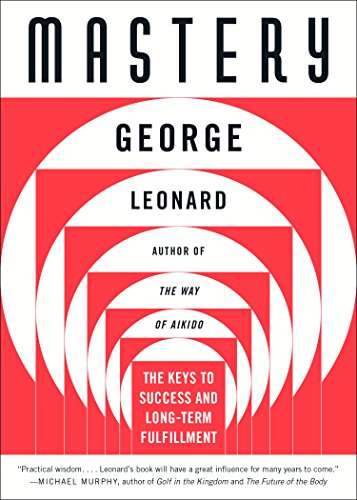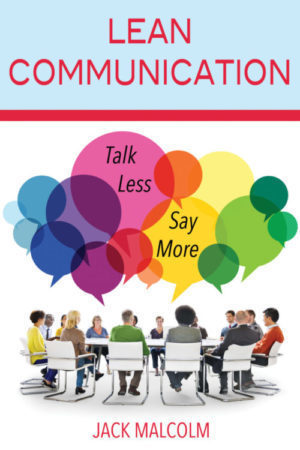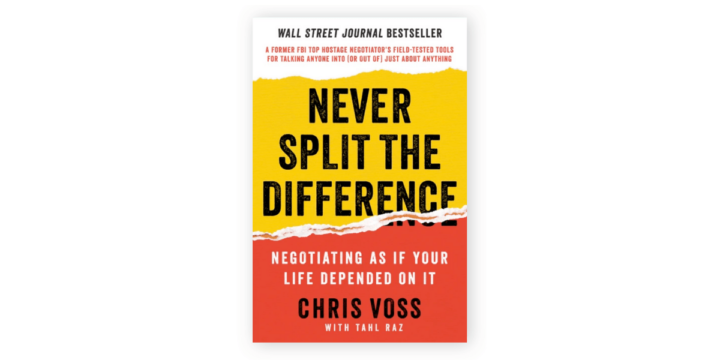Some books you just have to be ready to read. I first read George Leonard’s, book, Mastery: The Keys to Success and Long-Term Fulfillment thirty years ago, soon after it first came out. I found it useful, but it is only now that I chanced upon it on my bookshelves and re-read it, that it has deeply affected my thinking. I feel like I am ready because for the past ten months I have taken up the challenge of learning how to draw.
What about you? Have you ever had ambitions of mastering a skill or activity, only to abandon it soon after the initial enthusiasm? Or do you find yourself stuck in a rut, needing a new challenge to occupy your attention and fire your enthusiasm? I’ve been in both situations—repeatedly—and I know how difficult and rare it is to master a new skill, especially later in life.
If so, it helps to have a mentor to place you on the proper path and guide you along it. Leonard died in 2010, but his short and insightful book can provide the wisdom and instruction that can improve your chances of success.
The key insight, for me, is that mastery is not a goal. It is a never-ending path. Once you step on the path, you will never reach your destination, but you can go far. How far you go depends on what you do while on the path, and how long you stay on it.
Your progress will vary; you will probably make quick progress at first, and then you will inevitably hit a patch where you don’t see any improvement at all and may even regress. That’s when it’s so easy and common to get frustrated and quit, or impatiently double down on your efforts and possibly get even worse.
Many people never get past this first plateau, but those that stick with it are generally rewarded with another burst of improvement, and on it goes. Leonard’s key point is that the real improvements are actually occurring during these plateaus, as your brain and body gradually figure out how to turn the required behaviors into unconscious habits. The bursts of improvements are merely the markers of that progress.
You will spend most of your time on the path on one of these plateaus. Plateaus are good. Mastery, therefore, comes from embracing those plateaus. For me, this is the most important point: learn to love the practice for its own sake. Practice, according to Leonard, is not a verb but a noun: you have a practice—an approach or a process—that is worth following for its own sake. Masters love to practice.
This idea resonates with a concept I’ve written about before:
There are two general types of goals that people set for themselves, performance goals and learning goals. Performance goals are about reaching a set target, which is frequently related to how you compare to others. Learning goals focus on learning, getting better and comparing yourself to yourself.
The idea may seem to counter results-oriented business activities. But even in sales, one study has shown that salespeople who pursue learning goals outperform those who chase performance goals.
What is success? Is it the reaching of a difficult and meaningful goal, or the enjoyment and fulfillment that comes from being dedicated to the pursuit? The beauty of following Leonard’s advice is that you will not only enjoy the journey, but you will be more likely to reach a worthwhile destination.
As for drawing, I have no expectation of ever mastering the skill. But after ten months I am no longer terrible at it, and next month I’ll be better, and the month after that. Most importantly, I am so enjoying the effort—and that in itself means I’ve already succeeded. Mastery is not the destination, but the path.
This was a hard review for me to write, because I am so conflicted about 7 Rules of Power: Surprising–but True–Advice on How to Get Things Done and Advance Your Career, by Jeffrey Pfeffer.
Here’s the good news. If you follow Pfeffer’s advice, you are much more likely to attain positions of power and be able to use that power to get things done. The bad news is that you might not like the person you become—or reveal yourself to be.
Let’s address the good news first.
I’ve been a fan of Jeffrey Pfeffer’s work for a long time, since I first read The Knowing-Doing Gap almost 30 years ago. I’ve read at least six of his books, and like them because they are filled with evidence-based management and personal advice, and because his research leads him to counter so much of what passes for management advice, and focus on uncomfortable truths about how power actually works in the real world, vs. how idealist leadership “gurus” want it to be.
His latest book, 7 Rules of Power: Surprising—but True—Advice on How to Get Things Done, follows that same tradition: a lot of practical advice based on solid research. There is a lot to like in this book. (If you haven’t read Pfeffer before, this book is useful because it encapsulates a lot of his ideas briefly. If you have read Power or Managing with Power, you probably won’t learn much that’s new.)
Briefly, the 7 Rules are:
- Get out of your own way
- Break the rules
- Appear powerful
- Build a powerful brand
- Network relentlessly
- Use your power
- Success excuses (almost) everything
Without going into detail for each rule, the gist is this: the world is not fair, and you don’t move up or accumulate power simply by showing up and doing good work, especially if others are employing some of the 7 rules to leapfrog you.
I don’t argue against the efficacy of Pfeffer’s 7 rules in attaining and maintaining power. They make sense to me, and he backs up his claims with solid evidence.
But I strongly take issue with Pfeffer’s stance on attaining and using power. Pfeffer says that morality is irrelevant to the pursuit of power. He says “Leadership is not a moral pursuit. It is above all about the pragmatism of making things happen.”
My first critique is that the suggestion that the ends justify the means sounds suspiciously close to those who praised a certain dictator because he made the trains run on time, or evangelicals who tolerate extremely un-Christian behavior from a leader because it gets them seats on the Supreme Court. Even if the ends are honorable, the means always carry consequences that are harmful to many people along the way.
Second, the people who most enthusiastically embrace some of the behaviors described in the book are the least likely to pursue honorable, altruistic aims once they are in power. It’s not so much that power corrupts—more often it reveals true character, because those in power tend to care less about what others think and they get away with it.
Finally, Pfeffer correctly notes that success excuses a lot. Those who attain positions of great power are shielded by that power, so anything you do to get it will carry no consequences. That sadly appears to be more true than ever. But, like most “how to” books, he ignores the fact that it’s possible or even likely that one could carefully employ the first five rules and still fail to attain power, making the last two rules moot. They won’t get to the point where they are immune from the consequences of their behavior.
If you want practicality, this is the book for you. If you want morality, don’t read it. In the end, I ask myself, would I want my son or daughter to read it? I would give a cautious yes, but I would trust them to sort out what they are comfortable with. I agree with Pfeffer’s contention that I don’t have a right to preach to you, so the same applies to you.
For further reading:
It’s finally here! My latest book, Lean Communication: Talk Less, Say More.
If I could sum up my book in seven words it would be: communication should be helpful, brief, and clear.
It sounds obvious, but it’s hard to do, which is why I’ve spent the past five years learning, teaching and refining the principles of lean communication.
Lean communication is a mindset and set of principles and practices to apply lean thinking to become a better thinker and communicator. In the manufacturing world, lean thinking has produced exceptional improvements in productivity and customer value. Manufacturing is a process that takes in raw materials, applies work to them, and produces something a customer values. This single-minded focus on creating more value with less waste carries many lessons that also apply directly to communication, which is a process that takes in information, applies thinking to them, and produces a message a listener values.
The result: ten powerful keys to ensure that you consistently communicate useful information, briefly and clearly.
In a world filled with vast amounts of noise and distraction, the only way to gain and sustain attention is to communicate more value with less waste. In short, you need Lean Communication.
Do yourself a big favor and get a copy of Lean Communication: Talk Less, Say More.
Do yourself an even bigger favor and buy copies for the people who speak to you most.
I have more than 40 books on negotiating, so I wasn’t expecting to learn too much when I picked up a copy of Never Split the Difference: Negotiating As If Your Life Depended on It, by Chris Voss. I was wrong. Never Split is one of the best negotiating books I’ve read in a long time.
Why? Because it covers the emotional, non-rational side of negotiating more deeply and more realistically than any of the others, and Voss provides eminently practical ideas and techniques that ring true. As a former hostage negotiator with the FBI, Voss brings a different background and skillset to the table than the usual academic, businessman or sports agent.
By their very nature, hostage negotiations are probably going to contain more intense emotions than the typical business deal, but that doesn’t change the fact that the personal element is always a huge factor lurking under the surface. Even the most sophisticated and jaded business negotiator has feelings and fears and ego and personal desires which get in the way of strictly commercial considerations.
There is a great line in the book which every negotiator should remember: feeling is a form of thinking. A negotiator who enters a negotiation armed only with reason and pure intellect is like a fighter with one hand tied behind their back. For example, your rigorous economic analysis may help you prove your offer is fair, but your “irrational” counterpart may still find it insulting and throw it back in your face.
Voss exposes the biases and quirks that lie just under the surface, and recommends practical and sometimes surprising techniques to take advantage of them. Everyone will find their own which resonate with them, but let me share two of my favorite here. (There are others, but I’ll keep them to myself in case a potential future client is reading this.)
Use calibrated questions. Calibrated questions are open-ended questions that are calibrated for a specific effect. For example, when your counterpart makes an unreasonable demand, don’t argue; simply ask, “How am I supposed to do that?” It forces them to think from your point of view.
Master the art of “no”. A lot of sales approaches tout the value of getting your prospect to say yes, but that makes people suspicious and defensive. Even when you get a yes at the end, it’s not likely to stick as a lasting agreement. In my last post, I wrote about reactance, which activates our inner two-year-old when we feel like were being pushed. Allowing people to say no—actually inviting them to say no—helps people feel in control and lowers their defenses. Voss shares a simple technique to use this tendency to get people who have been ignoring you to reply to your email. I tried it yesterday and got a response within minutes, so I guess the book more than paid for itself already!
There is much more that is valuable in this book than just these two ideas. The best part is that you don’t have to do any formal negotiating to benefit from Voss’ lessons. Daily life is full of opportunities to reconcile conflicting needs with people in your life, and these approaches will help you achieve the seemingly incompatible aims of getting your own way more often while at the same time improving your relationships.
I said earlier that you will get into trouble if you enter a negotiation ignoring feelings and relying too much on your rational positions. But it’s important to remember that the opposite applies. Voss is a little too dismissive of the Harvard rational approach for my taste. Especially in complex B2B sales negotiations, where you may be sitting across the table from professional buyers with reams of data at their disposal, preparation and positioning will still go a long way… but that’s a topic for another post.
So, I’m not throwing out the rest of my negotiating books yet, but Never Split the Difference is one of the few that I will continue to read more than once. And I highly recommend that you do, too—even if we may potentially face off across a negotiating table some day!






